List of Authors
>>About this blog
Recent blog post
|
[Sumida Fireworks]
October 28, 2015 09:00
The other day, I stopped by the Kachidoki Bridge Museum next to Kachidokibashi for the first time in a long time.
This museum was created by renovating the substations used to open Kachidokibashi, but it seems that this year marks its 10th anniversary.
On the way back, I received a limited postcard commemorating the 10th anniversary from my uncle at the museum, but I was glad that I was a good opportunity and asked my uncle about the questions I always thought when walking on the Sumida River Terrace .
What I asked about was "Kiyosu Bridge".
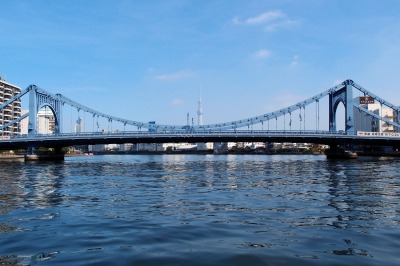 It is a suspension bridge built by a reconstruction project after the Great Kanto Earthquake and has become an important cultural property of the country. It is a suspension bridge built by a reconstruction project after the Great Kanto Earthquake and has become an important cultural property of the country.
While the "Eitai Bridge" built in the same reconstruction project is said to be masculine, this "Kiyosu Bridge" is said to be "female" because of its form, and is very popular and loved among the Sumida River bridges. I am.
It is this part that my eyes always come up when I walk on the Sumida River terrace.
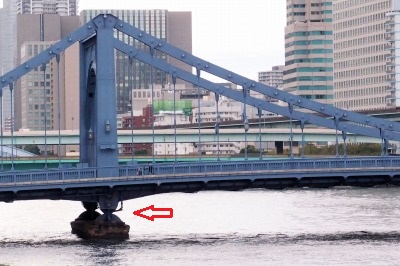
Looking from a distance, the lower part of the suspension bridge is constricted, and it seems to break somehow with a delicate feeling. The pillars of the suspension bridge had the image of being thick and pierced to the ground, so I asked a super amateur question, "Why is it okay?"
I was taught gently, but it was a little difficult because I didn't have any prerequisite knowledge or talked about mechanics. I regretted that I should have studied a little more and asked, but I remembered the following and returned home.
・This part is a kanji called "Kutsu", which combines "water" and "day", and is read as "shu".
・Depending on the shoe, the direction of force due to the weight of the bridge is transmitted directly below the pier.
・The image of a bridge riding a shoe.
A few days later, when I looked up at libraries, etc., this part was called "Shisho", and in English it was the word "Shoo" and Shoo of shoes. Since "Kutsu" is read as "Kutsu", it seems that he reads "shu" in the architectural industry term with the kanji "Kutsu".
Although it is a member that conveys the weight of the bridge to the bottom, the bridge extends and shrinks due to temperature changes, so it seems that this bearing plays the role of "play" and adjusts well.
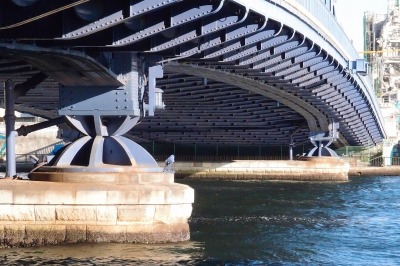 For Kiyosu Bridge, it is an image of wearing a shoe and riding a pier, so this part may be an Achilles tendon or ankle in humans. For Kiyosu Bridge, it is an image of wearing a shoe and riding a pier, so this part may be an Achilles tendon or ankle in humans.
Then, in the style of a woman Kiyosubashi, would it be like a "small woman's ankle"? I was strangely convinced (a little rude Kana?) 。
Kiyosu Bridge is a suspension bridge, but it is a rare suspension bridge when examined in various ways, and is a type called "autonomous suspension bridge".
The ordinary suspension bridge is a type called "other formula suspension bridge", and at both ends of the bridge there is a weight (Anka Reiji) for pulling the cable.
(The photo below shows the Rainbow Bridge of another set suspension bridge, with a huge white lump as Anka Reiji.)
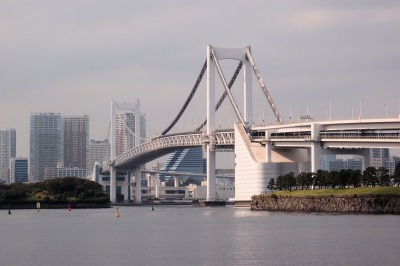
However, a "self-built suspension bridge" like Kiyosu Bridge is a type that connects wires to both ends of the bridge girder. Since there is no weight at both ends of the bridge, it seems to have a refreshing look as a result (incidentally, Kiyosu Bridge is not a wire but a steel chain, which seems to be rare).
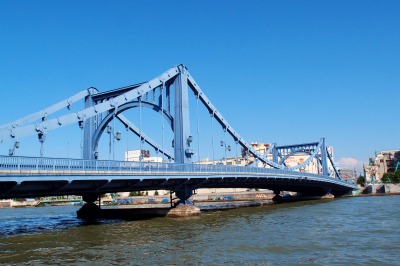
Also, I had the image of a suspension bridge with a sturdy thick pillar piercing the ground, but in the case of a "self-built suspension bridge", it seems to be related to the shape of a shoe. And my view of the pillars of Kiyosu Bridge was incorrect.
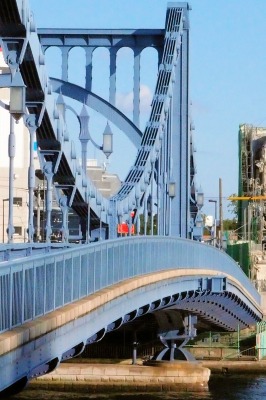 I felt that this way of making a bridge called "self-built suspension bridge" is creating the "female charm" of Kiyosu Bridge. I felt that this way of making a bridge called "self-built suspension bridge" is creating the "female charm" of Kiyosu Bridge.
I don't have enough study yet, but I'm glad I was able to know a lot after asking my uncle. Thank you very much.
By the way, there are various types of bridges in the Sumida River, which is also called the "bridge museum".
At the "Chuo-ku Marugoto Museum" on November 1st (Sun), you can get on the boat for free, but why not take a boat and compare various bridges?
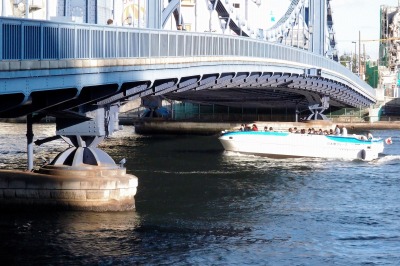
"Kiyosu Bridge" is sure to have a place where you can feel feminine compared to other bridges.
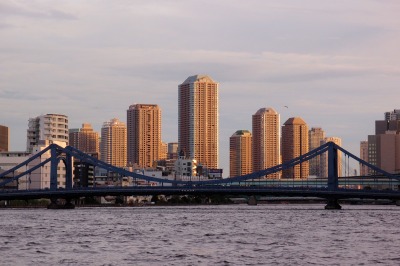 I hope you will find "female charm" by all means. I hope you will find "female charm" by all means.
[Sam]
October 27, 2015 14:00
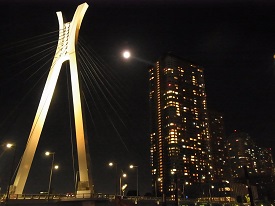  This year, October 25 is September 13 in old calendar, thirteen nights. This year, October 25 is September 13 in old calendar, thirteen nights.
Also known as "Kurinamezuki" and "Mamenamezuki".
The fifteenth night (mid-autumn moon) is called the "previous moon", the thirteenth night is called the "later moon", and the two moons are collectively called the "two nights (Futayo)". A moon-viewing custom that has long been popular with Japanese people as a feature of autumn.
The lack of moon viewing on one side of the fifteenth and thirteenth nights is called "Kata Mizuki", and it is said that he hates.
Around September 13 in old calendar is generally climatically fresh and can be compared to "no cloudy on the thirteenth night."
The northern wind strengthened nationwide from the night of the 24th, and the first tree withering was observed in the city center, and the fine weather was clear on the 25th.
A beautiful moon shines beside the window lights of the lit-up condominiums of Chuo-ohashi Bridge River City.
The phases of the moon serve as a calendar for the people of agricultural culture and have a history of being valued.
It is imagined that worshiping the moon and offering gratitude was more integrated into people's lives than ever.
The thirteenth night is one step before the full moon.
It is also interesting to love a slightly chipped shape.
It's a bit different from the fifteenth night.
[Slow of Satsuki's Koi]
October 27, 2015 12:00
Introduction of walking course

St. Luke Garden, Henry Falls Stone Monument, Tsukiji Catholic Church, Sumida River Terrace, Kachidokibashi, Namiki Shrine, Tsukiji Outer Market
The feature of this course is the first half and the second half, and the state of the town changes dramatically.
The first half is a calm and quiet environment from the vicinity of Akashicho to the Sumida River Terrace. In the second half, when I came to Kachidokibashi and Harumi-dori St., I turned around.
The traffic of cars and people increases, and you can feel the busyness of Tsukiji Market.
St Luke's Garden
I remember that there used to be a dormitory for nurses or nursing college students.
For a while after completion, there was a free observation room on the high floor, so I could see the distance.
It is currently closed. The night view was particularly beautiful and free, but I'm sorry.
Henry Falls Stone Monument
Henry Falls conducted fingerprint research here and published it in scientific journals.
Since then, this study has been useful in criminal investigations and crime prevention.
In addition, we conducted medical activities, but Akashicho was a foreign settlement.
I opened a clinic in Minami-Odawara-cho (I think it is around 6.7-chome Tsukiji now).
This "Odawara-cho" has the "Odawara-cho police box" on Tsukiji 6-chome Harumi-dori St., and the name of the town at that time was changed.
You can know it.
Tsukiji Catholic Church
In the past, there was a kindergarten in this church, and it was called Josef Kindergarten.
Actually, I am a graduate of Josef Kindergarten, and this cathedral is called the Mido.
I still remember that the stained glass on the front is beautiful. (I don't remember what it is.)
The name of Mido (sacral) of the Tsukiji Catholic Church is said to be "St. Joseph".
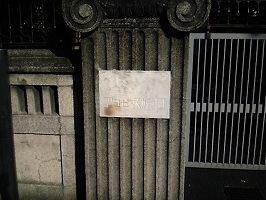

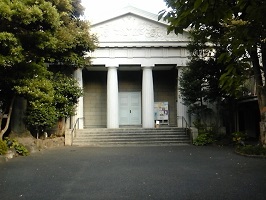
St. Luke's International Hospital
The current St. Luke International Hospital was completed in 1992, but the symbolic center of the former hospital has been preserved as it is.
There is a chapel inside, where flies and rats are drawn on the tiles on the floor.
I was wondering, but it seems that you can step on these unsanitary things that transmit infectious diseases with your feet.
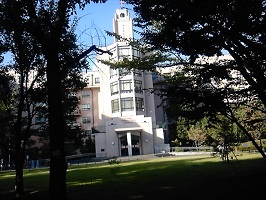
Sumida River Terrace
The Sumida River embankment was previously called the razor dike and was separated from the river. But at that time
(Before 1970), the odorous water was black and dirty, so I didn't feel like approaching.
Now it is recommended for a walk as introduced here. I think it's a drama.
Photography is also taking place.
I think it was until around 1970, but the Sumida River water bus company was behind Jisaku, and the ship was moored.
The names of the ships were "Urashima Maru, Ryugu Maru, and Otohime Maru" in connection with Urashima Taro.
Kachidokibashi-outside market
When you go to Kachidokibashi / Harumi-dori St. from the Sumida River Terrace, it is full of liveliness as if you came to another town.
As you know, the out-of-office market from Namiki Shrine is not only for Japanese but also for customers from overseas.
I enjoy shopping and eating.
[CAM]
October 24, 2015 14:00
"Hanatsubaki-dori" is the street that crosses the 7-chome to 8-chome on Chuo-dori, the main street of Ginza. Izumo camellia donated by Izumo City was planted as a street tree, so it seems that the current name was given.
In "Ginza Hanatsubaki-dori Official Webb", "(at the time of the founding of Edo shogunate) reclaimed the sea called "Hibiya Irie", and maintenance aimed at expanding the castle town was completed 30 years later, and Edo-yashiki, a feudal lord of various clans, was launched to be built. In this area, the Matsue clan's upper residence was built. Since the Matsue clan owned Izumo one country, it was named "Izumo-cho", and the street was also called "Izumo-dori" like the street name, and "In 1934 the origin of the street name camellia contributed. "
At present, granite is laid neatly, and as a memorial to its maintenance, a statue of Hana, a ponytail girl with camellia flowers, is placed. The eight camellias contributed from Izumo are still alive and you can see beautiful red flowers from March to April. Also, dogwood in the United States is planted as a street tree. It continues to be loved as a vibrant street that attracts tourists from all over the year, regardless of men and women of all ages.
The back building is the Ginza Shiseido Building
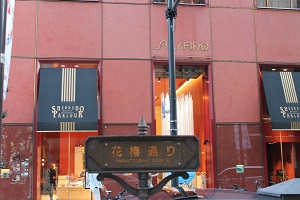
Tsubakiya Coffee Shop Main Store
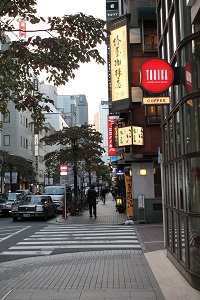 The statue of the girl "Hana" The statue of the girl "Hana"
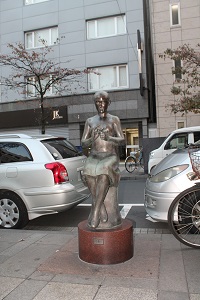 The Showa-dori Pedestrian Bridge has an escalator. The Showa-dori Pedestrian Bridge has an escalator.
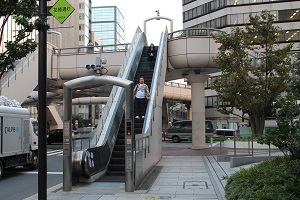
In the past, the "Shiseido" symbol mark is called "Hanatsubaki", and the name "Tsubaki" has been often used in activities related to Shiseido. However, this symbol was discontinued in advertising in 1987, and since 1989, it has been removed from the product and its use has been limited to extremely narrow areas such as stock certificates. However, the policy has been changed since 2004. As a "Tsubaki" fan, I am happy to return to the tradition of Shiseido's policy.
Looking at the Shiseido Group website, "Shiseido's symbol "Hanatsubaki" was designed and created by the first president Shinzo Fukuhara in 1915. Even after several fine-tunings have been made since then, Shiseido's unwavering identity has continued to this day."
As a matter of fact, my blog name "CAM" is an initial letter of "Camellia".
[Sam]
October 16, 2015 12:00
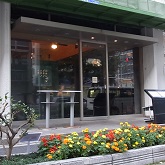 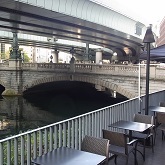 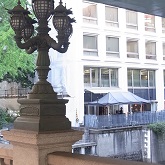
  In front of you is the Nihonbashi River. In front of you is the Nihonbashi River.
You can enjoy "Nihonbashi Beer" on the open terrace on the riverside.
In the old days, the starting point of Gokaido, the center of Japan, the symbol of the prosperity of Edo, and the side of Nihonbashi, which opened in June 2008, the Japanese dining & bar "Nihonbashi Ichinoichi (Nihonbashi 1-chome No. 1)" (Kokubu Building 1F).
It has a stylish interior and consists of a dining, bar, and terrace area, and can be used for various scenes.
Business hours
Lunch 11:00-14:00
Dinner from 17:00 to 23:30
Happy hour from 16:00 to 19:00 (15:00 to 19:00 on Saturdays and Sundays): Drink ALL ¥300
(However, Nihonbashi Beer is excluded)
The brewery of "Nihonbashi Beer" is Hoppy Beverage.
Lower fermented beer with live yeast, fragrant sweetness of wheat and bitterness of fresh hops.
It has a mild and refreshing taste.
Originally, it is heard that it was born as a PB product of Kokubun, a long-established food and liquor wholesaler in Nihonbashi, renting the name of the head office location and raising it as a leading beer in Tokyo, but it has been attracting attention in recent gourmet scenes There is also a movement of craft beer, which seems to be increasing attention.
The evening time when you spend a refreshing breeze is exceptional, but you can't miss the glittering view of Nihonbashi lit up at night.

[Sam]
October 10, 2015 16:00
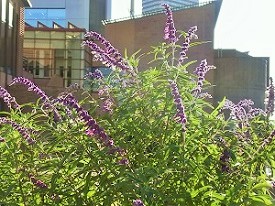 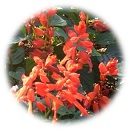
An annual mini-garden guided tour that takes a walk around the park with the guidance of a green adviser at the Pocket Plaza "Flowers, Water and Trees" in Harumi Triton Square.
The theme of this month, which will be held on October 8, is the Triton common sage Collection.
common sage generally refers to the red common sage "Salvia Splendes" (Japanese name: Hirobei) and its horticultural species (narrow sense), but in a broad sense it refers to the whole plant of the family common sage, which is said to be more than 500 species in the world.
common sage's name is said to be derived from Latin salvus (meaning health, good condition) and is said to be derived from the medicinal effect of the species of the genus.
The genus common sage has a variety of varieties of grass and flower colors, many of which are perennial plant.
Salvia Splendes native to Brazil, common sage Palina Care (Blue common sage) native to Texas, and Salvia Coxinea native to Mexico are considered "annual plants" for horticultural purposes.
I heard that the varieties of "Kokushinea" are limited, but a new variety of "Kokushinea" Salvia Coxinea "Sakuraburuko" is also planted in the park.
A pretty flower figure with a beautiful salmonish pink flower color reminiscent of cherry blossoms.
On the other hand, "common sage Phoenix" Phoenix Wine ", which has a slightly astringent and calm color, gives the impression of an adult atmosphere.
In addition, the common sage Microphyla (Cherry sage) has a sweet scent like ripe fruit when rubbing the leaves, the Salvia Leukansa (amethyst sage), which has a unique white petals and a red-purple velvet-shaped calyx, and the salvia salvanachica (common sage) with a variety of common sage flowers and black sepalsy.
This time, we took a 50-minute plant walk, focusing on "Flower Terrace" and spotlighting common sage and learning how to enjoy plants by "seeing, listening and touching".
From the left, common sage Farina Care, Salvia Coxinia "Sakuraburuko", common sage "Phoenix Wine", common sage Microphyla
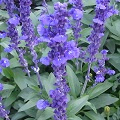 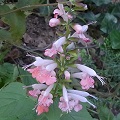 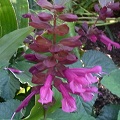 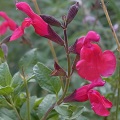
From the left, Salvia Leukansa, common sage Indigo Spa Year, Salvia Uruginosa, Salvia Guaranachika
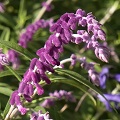 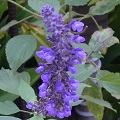 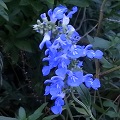 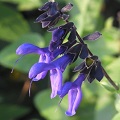
|
Links
|
 It is a suspension bridge built by a reconstruction project after the Great Kanto Earthquake and has become an important cultural property of the country.
It is a suspension bridge built by a reconstruction project after the Great Kanto Earthquake and has become an important cultural property of the country.
 For Kiyosu Bridge, it is an image of wearing a shoe and riding a pier, so this part may be an Achilles tendon or ankle in humans.
For Kiyosu Bridge, it is an image of wearing a shoe and riding a pier, so this part may be an Achilles tendon or ankle in humans.

 I felt that this way of making a bridge called "self-built suspension bridge" is creating the "female charm" of Kiyosu Bridge.
I felt that this way of making a bridge called "self-built suspension bridge" is creating the "female charm" of Kiyosu Bridge.
 I hope you will find "female charm" by all means.
I hope you will find "female charm" by all means.
 This year, October 25 is September 13 in old calendar, thirteen nights.
This year, October 25 is September 13 in old calendar, thirteen nights.




 In front of you is the Nihonbashi River.
In front of you is the Nihonbashi River.











